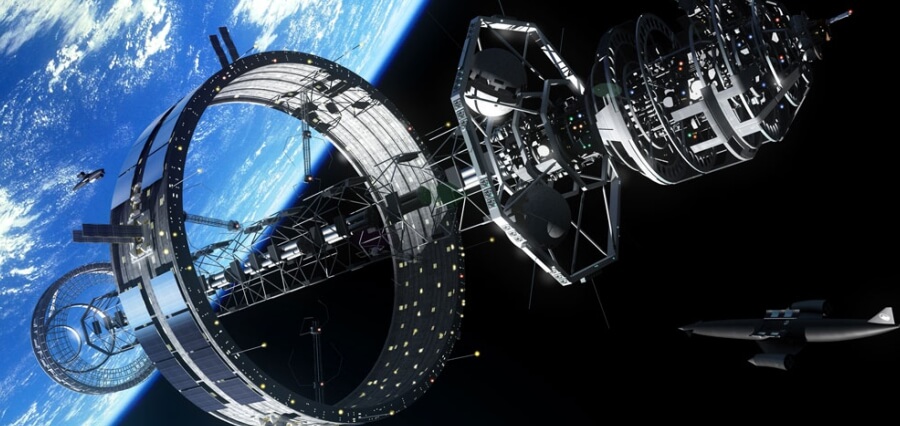Emerging Trends in Space Exploration
The fascination with outer space has captured our imagination for generations, and as technology advances, we are inching closer to realizing the dream of establishing a sustainable human presence on celestial bodies like the Moon and Mars.
The Moon: A Stepping Stone to the Stars
The Moon has long served as a source of inspiration for scientists and space enthusiasts alike. However, the Moon is not just a celestial neighbor; it is also a crucial stepping stone for human missions to Mars and beyond. Recent trends in space exploration have been driving us towards establishing a sustainable lunar presence.
One of the key innovations in this domain is the Artemis program, led by NASA. Artemis aims to return humans to the Moon by the mid-2020s and establish a sustainable lunar presence. This program not only seeks to advance our scientific understanding of the Moon but also to develop the technology and infrastructure necessary for future missions to Mars.
Crucial to these plans is the creation of lunar habitats. Scientists and engineers are working on developing structures that can withstand the Moon’s harsh environment while providing a safe and comfortable living space for astronauts. The lunar habitat concept envisions the use of 3D printing, which allows astronauts to build structures using lunar soil and local resources. This not only reduces the cost of space travel but also makes the habitats more sustainable.
Furthermore, the development of sustainable energy sources on the Moon is another exciting trend. Solar panels and small-scale nuclear reactors are being considered to provide power for lunar habitats, making it possible for astronauts to stay for extended periods. This approach not only reduces the need for frequent resupply missions but also minimizes the environmental impact of human activity on the Moon.
Mars: The Next Frontier
While the Moon is a crucial first step in our journey to the stars, Mars has captured the imagination of scientists and space enthusiasts as the ultimate destination for human colonization. Recent trends in space exploration show that we are making significant strides towards sending humans to the Red Planet.
The most notable initiative in this regard is SpaceX’s Starship project, led by entrepreneur Elon Musk. Starship is an enormous, fully reusable spacecraft designed for missions to Mars. This ambitious project aims to transport humans to the Red Planet and establish a self-sustaining colony. The Starship’s potential success could open up new possibilities for humanity’s future in space.
Key to Mars colonization is the development of life support systems and habitats that can withstand the harsh Martian environment. Innovations like closed-loop life support systems, which recycle air and water, are being researched to ensure that astronauts can thrive on Mars. The use of Martian regolith (soil) to build habitats is also a promising concept.
Additionally, sustainable agriculture is a significant part of the Mars colonization equation. Growing food on Mars will be essential for long-term survival. Scientists are experimenting with hydroponics, aeroponics, and other innovative farming techniques to make Martian agriculture a reality.
International Collaboration
Another heartening trend in space exploration is the emphasis on international collaboration. Space exploration has traditionally been a global effort, and this trend continues to grow stronger. Initiatives like the Lunar Gateway, a proposed space station orbiting the Moon, involve multiple countries working together to advance our exploration efforts. The International Space Station (ISS), with its history of collaboration between space agencies, serves as a model for the success of international cooperation in space.
Mars exploration also benefits from international collaboration. The European Space Agency (ESA) and the Russian space agency, Roscosmos, have been involved in Mars missions. Together with NASA, they are working on a mission called ExoMars, which aims to search for signs of past or present life on the Red Planet. This type of collaboration ensures that space exploration is a shared endeavor for the benefit of all humanity.
Sustainability and Environmental Considerations
Emerging trends in space exploration are also strongly influenced by sustainability and environmental concerns. Just as we work to protect our planet, we must be responsible stewards of the celestial bodies we explore. This means minimizing the impact of human activity on these environments.
Innovations in propulsion technology are a prime example of these sustainability efforts. Electric and ion propulsion systems are becoming increasingly popular due to their fuel efficiency and lower environmental impact. These technologies not only reduce pollution but also extend the life of spacecraft, making them more sustainable.
Additionally, there is a growing emphasis on planetary protection. The scientific community recognizes the importance of preserving celestial bodies in their natural state and avoiding contamination by Earth microorganisms. This ensures that our exploration doesn’t harm potential ecosystems or obscure our understanding of extraterrestrial life.
In conclusion, the emerging trends in space exploration are nothing short of thrilling. As we prepare to embark on missions to the Moon and Mars, we are witnessing advancements in technology, international cooperation, sustainability, and environmental stewardship. These trends are guiding us toward a future where humans can live and work in space, expanding our horizons and our understanding of the universe. The challenges are immense, but with dedication and innovation, we are on the brink of making humanity a multi-planetary species, turning science fiction dreams into reality. The final frontier awaits, and we are ready to explore it responsibly and sustainably.








